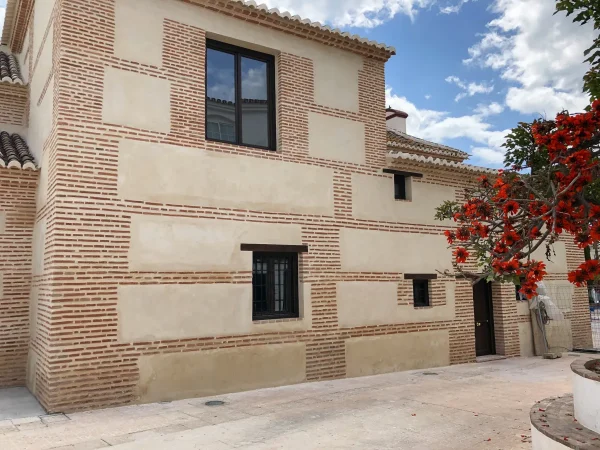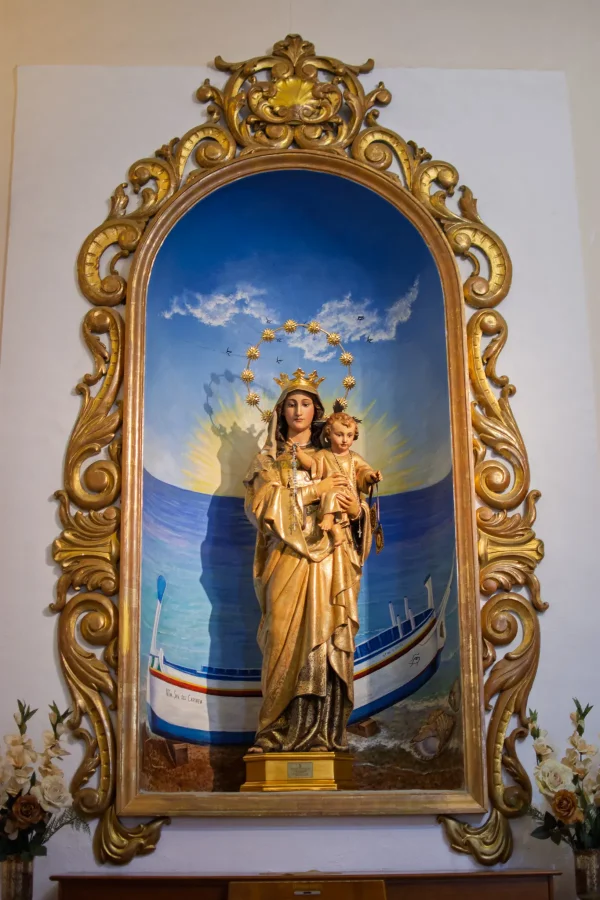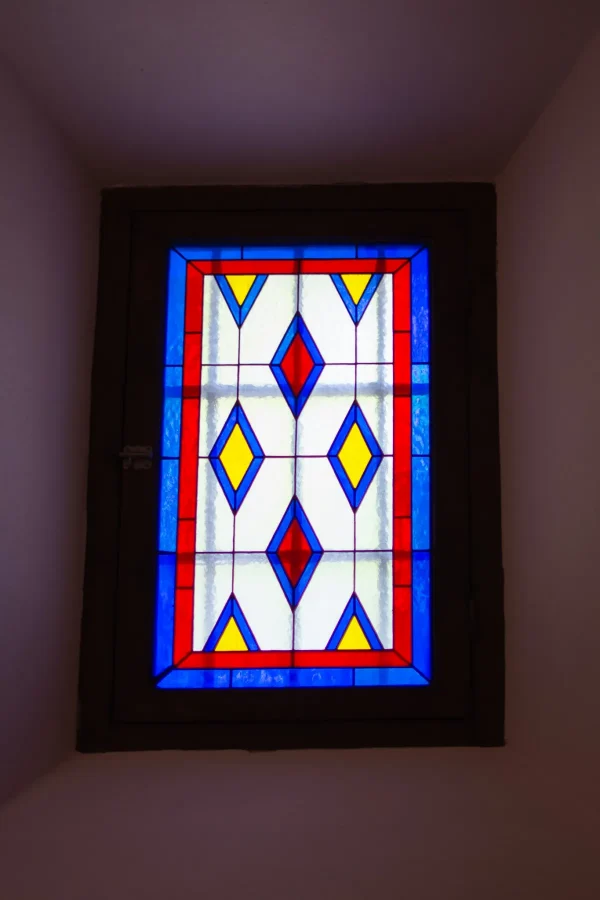Nerja has, in essence, three ‘churches’ – the iglesia El Salvador on the Balcón de Europa, the iglesia de San Miguel in Plaza de Andalucía and La Ermita de Nuestra Señora de las Angustias in Plaza de la Ermita. All three should be on any list of things to see when visiting the town.
La Ermita de Nuestra Señora de las Angustias in Plaza de la Ermita, a Baroque-style structure, was erected and consecrated within the very short period of seven months, being completed in 1720. It was the brainchild of, and funded by, Bernarda María Alférez Velasco, a resident of Granada. The idea was that it would thereafter be funded by the San Antonio Abad sugar mill in Nerja.

Nuestra Señora de las Angustias – Our Lady of Sorrows – is the patron saint of Nerja and features in many of the celebrations in the town. Inside the hermitage is the image of Our Lady of Sorrows, a work by José Navas Parejo and dating back to 1940.


In addition, the dome features magnificent frescoes attributed to a painter from the Granada school and dating back to between 1730 and 1750. These depict the Pentecost scene, the four evangelists, and the theological virtues.
The Ermita plays host to several small concerts (classical, choral, religious) throughout the year so keep an eye out for posters promoting such events.


Doña Bernarda María Alférez Velasco enjoyed a good social standing within the community as a result of her good works but that was all about to change with the arrival of the Spanish Inquisition. She was arrested in Granada on July 27, 1729 and imprisoned in the secret prisons of the Inquisition. Sixteen witnesses apparently testified against her, claiming that she belonged to the generation of Muslims who had remained in the kingdom after the re-conquest but had subsequently secretly continued to practice their original faith.
Although she spent several months in prison, was exiled for a period of four years, was forced to be re-educated in the Catholic faith and had part of her property confiscated, she escaped the full wrath of the Inquisition due to various connections, including family members who were actually involved with a number of aspects relating to the Inquisition.
There is some speculation that her exile could have been spent in Nerja and even that she may have been buried in the crypt of La Ermita, although neither has been proven and remains just that, ‘speculation’.